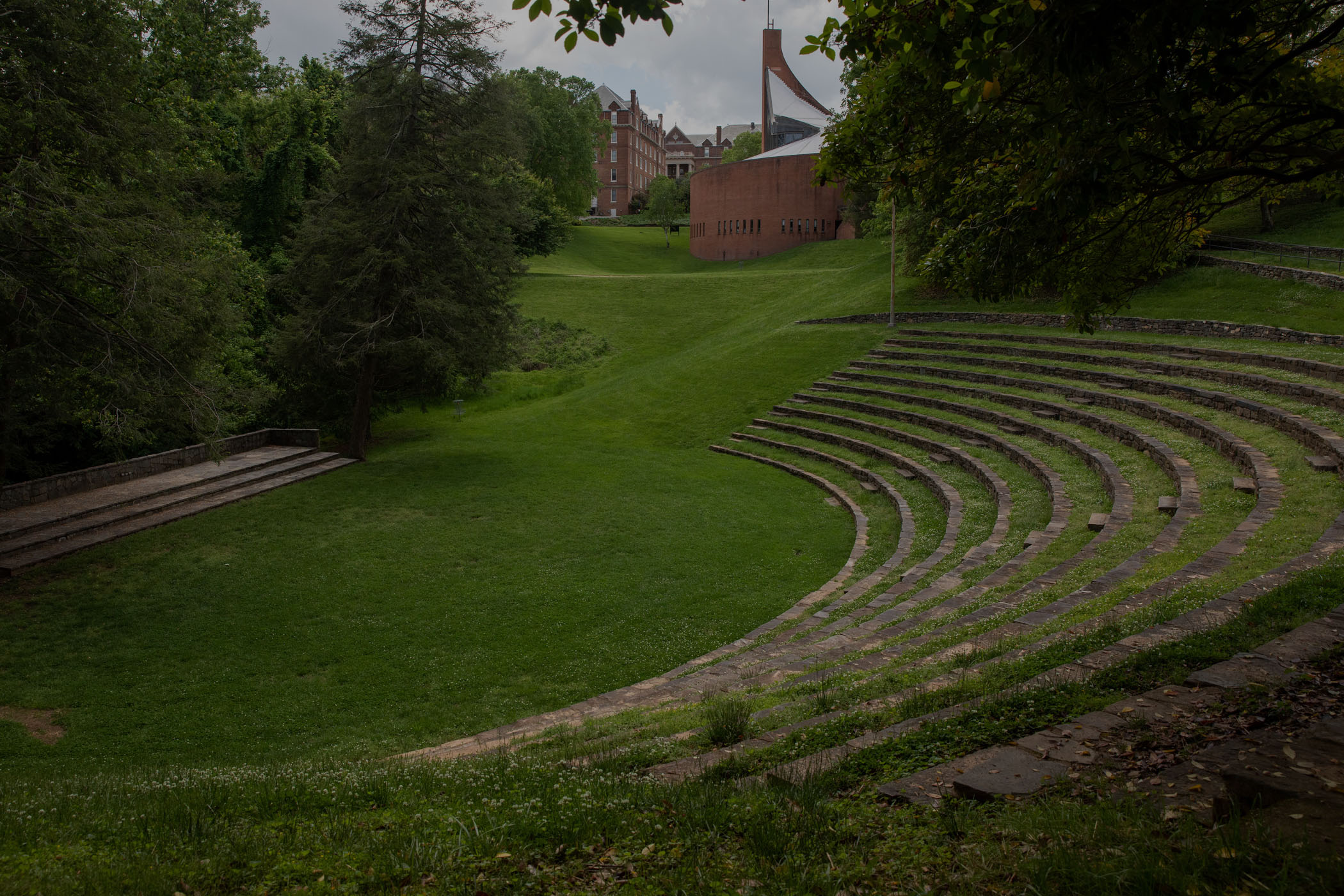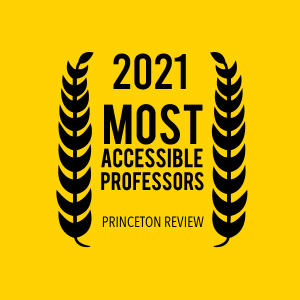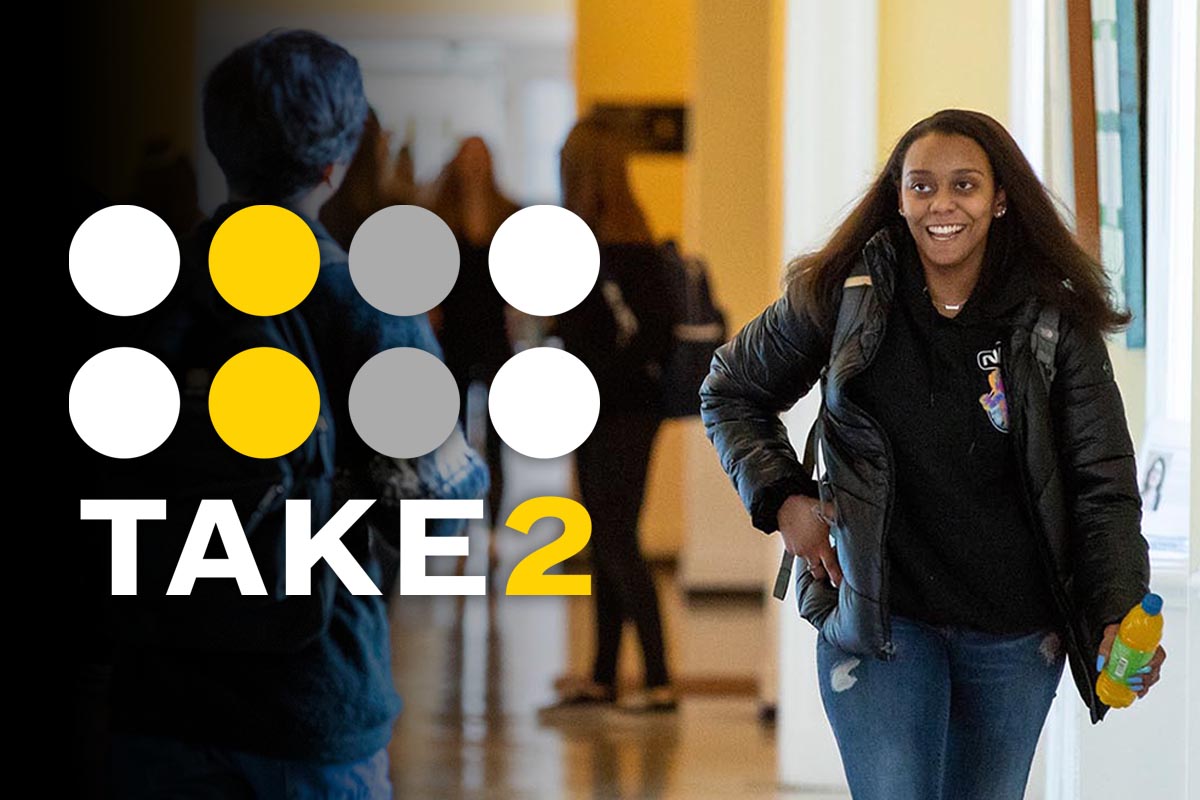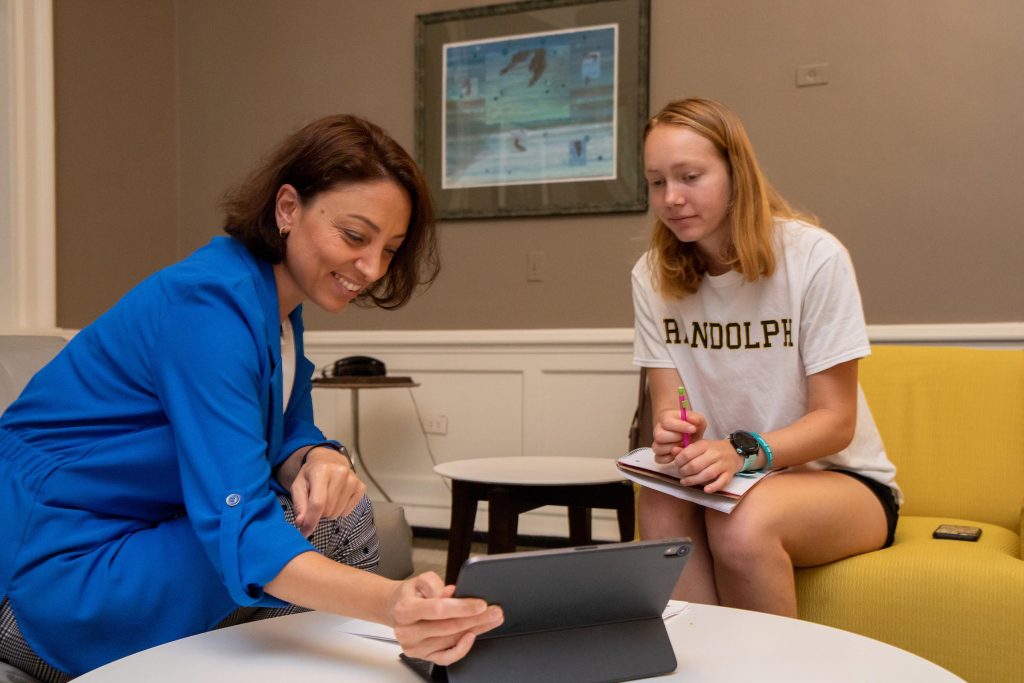Renaissance Studies
This interdisciplinary minor looks at the art, literature, culture, religion, and philosophy of one of the most influential periods in human history.

Why Study the Renaissance at Randolph?
The Renaissance Studies interdisciplinary minor allows students to experience one of the richest periods in the history of Western culture, refracted through several lenses of humanistic scholarship.
Students make connections across academic disciplines of art history, English literature, classical studies, comparative philosophy, religious studies, theatre, and history.
Recommended for students majoring in one of the fields included in the program with a special interest in this historical period.
Degrees offered
Renaissance Studies interdisciplinary minor
Participating Programs
Curriculum and Requirements
Students must complete 20 credit hours to qualify for the minor. A minimum of 5 of the following courses are required.
Required: (4 credit hours)
An introductory course dealing with the principles of Renaissance stagecraft, the nature of performance, the construction and themes of the plays, and the concept of genre or type. Representative plays in all genres from throughout Shakespeare’s career.
One of the following: (4 credit hours)
A bold, new style emerged in fifteenth-century Florence, setting the standard for European and American art until it was challenged by Impressionism and Modernism. Students will become familiar with cornerstones of the Western tradition in painting, sculpture, and architecture, made by great artists including Giotto, Donatello and Brunelleschi. By examining the intellectual, spiritual and political context of the works, students will understand not only their artistic significance but their original meanings as well.
Who does not know the painting of the Mona Lisa? This course examines the career of one of the most influential artists of all time, Leonardo da Vinci, and focuses on his rival, Michelangelo. Students will also discover the contributions of Venetian masters such as Titian and Palladio, whose works have inspired artists and architects for centuries.
Two of the following: (8 credit hours)
An investigation into the nature and uses of myth in ancient Greek and Roman cultures. Topics include the social significance of myth, the use of myth in art and literature, and the influence of Greco-Roman myth on Western civilization.
This course will introduce the main social, political, economic, and cultural forces that shaped and reshaped European societies and Europe’s relationship to the world in this period. Topics for discussion and study include the institutions of medieval Europe, the Renaissance, the Reformation, the emergence of modern commercial capitalism, the English Revolutions, and the Enlightenment.
This course studies European philosophy from 1600-1800, a time period when scientific discoveries inspired philosophers to radically reevaluate traditional sources of knowledge and methods of inquiry. During this period, the human mind becomes not just a tool but also an object of philosophical inquiry. Authors studied include Descartes, Hume, and Kant. Topics covered include the sources and limits of knowledge, the mind/body relationship, and personal identity.
One of the following: (4 credit hours)
Through lecture and seminar-style discussion, this course introduces the major ideas and artistic trends of the Medieval period. The political, philosophical, and spiritual changes that shaped the Western world after the dissolution of the Roman Empire are related to a selection of artistic periods and styles so that students can achieve an understanding of Medieval art and architecture within its context.
This course studies the emergence of the Baroque style in painting, sculpture, and architecture as a response to the political and spiritual upheaval wrought by the Protestant Reformation, the Council of Trent, and the Counter-Reformation. The formation of the style in Italy and its modification by northern European artists is addressed within their varied cultural contexts.
Topic will vary from year to year.
Fall 2021, Session 1: Heritage and the Classical Legacy
This course studies the forms of classical architecture developed in ancient Greece and later modified by the ancient Romans, known by extant examples and the treatise by Vitruvius. We will explore how later cultures responded to the forms, meanings, and appropriate uses of the Classical orders, and adapted them to their own needs. At the heart of this endeavor is the question why? What makes the architectural vocabulary of the Classical world so enduring and resonant? Part of the answer may be found in UNESCO’s world heritage process which evaluates the universality of cultural sites as a criteria for inclusion on their list. We will consider the processes of determining heritage, which function as a mirror, reflecting back to us the globally acknowledged value and meaning of this architectural tradition.
This course seeks to understand, analyze, and interpret representations of gender and sex within Renaissance art and literature (in both England and Italy). Using 80 contemporary texts when possible and readings from the disciplines of literature, social history, feminist theory, and art historical texts, the course aims for a fuller assessment of gendered Renaissance life as it pertains to art and literature.
The Hebrew Bible is an anthology reflecting the religious life and thought of ancient Israel and a primary source for beliefs, desires, and norms that underpin Western civilization. Students study and employ a wide range of strategies proper to scholarly analysis of the diverse textual traditions enshrined in the Hebrew Bible. Topics include founding legends, prophecy, wisdom, and apocalypse.
Scholarly analysis of the canonical anthology of the early Christian movement, emphasizing its origin in provincial Palestinian culture and efflorescence in Asia Minor of the first two centuries CE. Students study and employ a wide range of strategies for ascertaining the origin, setting, transmission, and aims of New Testament writings. Topics include scholarly reconstructions of the historical Jesus, diverse perspectives on Jesus among early Christian communities, the thought-world and ministry of the apostle Paul, formation of the New Testament canon, and the evolution of orthodoxy.
Opportunities for Experience
Summer Research Program
Spend the summer working closely with a professor on a focused aspect of a Renaissance Studies topic of your choosing.
Randolph’s intensive eight-week Summer Research Program enables students to work with professors on a research of their own design; live in a residence hall on campus, participate in on-campus summer events, attend special seminars with guest speakers; and share the progress and results of their research.
Symposium of Artists and Scholars
Modeled after a traditional academic conference, the SAS brings together students of all disciplines to share the results and highlights of the best work being produced at the College – oral presentations, readings of creative works, performances, exhibitions of student artwork, and poster presentations.
Internships
Learn by doing – in the field and on the job. The Career Development Center will help place you in positions with leading companies and organizations in your field of study.
Unique Experiences
Opportunities

Top Ranked Professors
Randolph College’s faculty are consistently recognized as among the best in the nation. The Princeton Review ranked the College in the Top 20 for most accessible professors in the 2021 edition of its flagship college guide, The Best 387 Colleges.
Randolph has been ranked in the top 20 for most accessible professors for four consecutive years.
Faculty Coordinators
Mara Amster
Charles A. Dana Professor of English, Associate Provost of the College
Read More... Mara AmsterOnly at Randolph
Randolph students can take advantage of unique programs which give them a more enriching education than can be found anywhere else.
Two courses per half-mester means you get to focus in and dig deep into your coursework while still having time for the rest of the college experience. Two classes. Seven weeks. Repeat.
Randolph students work with faculty mentors to explore a broad range of disciplines as they chart their academic path.
Randolph graduates learn to think critically, solve problems and work well with others. They are prepared to succeed in all aspects of life.
The Randolph Innovative Student Experience (RISE) program provides every student a $2,000 grant to fund research, creative work, experiential learning or other scholarly pursuits.
News
Randolph named a College of Distinction for 2025-26 academic year
The College was also recognized as a leader in international student education, undergraduate teacher preparation, and business education.
Read MoreRandolph included in Princeton Review’s ‘Best 390 Colleges’ guide
The Princeton Review has once again recognized Randolph.
Read MoreRandolph featured in 2025 ‘Fiske Guide to Colleges’
The 2025 edition of the guide praised Randolph for pursuing “its traditional mission of strong liberal arts through a unique and creative curriculum.”
Read MoreRandolph named a College of Distinction for 2025-26 academic year
The College was also recognized as a leader in international student education, undergraduate teacher preparation, and business education.
Read MoreRandolph included in Princeton Review’s ‘Best 390 Colleges’ guide
The Princeton Review has once again recognized Randolph.
Read MoreRandolph featured in 2025 ‘Fiske Guide to Colleges’
The 2025 edition of the guide praised Randolph for pursuing “its traditional mission of strong liberal arts through a unique and creative curriculum.”
Read More

